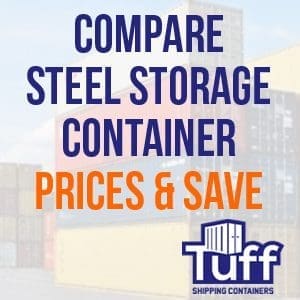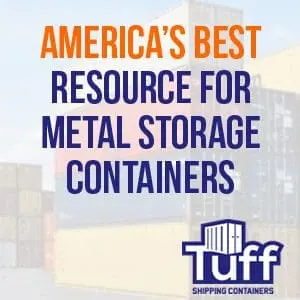
Insulation and Climate Control in Shipping Container Buildings
The versatility of shipping containers has seen them transformed from mere storage boxes to fully habitable spaces, ranging from cozy homes to spacious offices. However, to make these steel boxes comfortable, insulation and climate control are crucial. Here’s how you can effectively insulate a shipping container to adapt it for various climatic conditions.
Understanding the Basics of Shipping Containers
Shipping containers are primarily made of steel, a good conductor of heat. This means that, without proper insulation, the interiors can become excessively hot in summer and freezing cold in winter. Effective insulation acts as a barrier, preventing extreme temperature swings inside the container.
Shipping containers, at their core, are large standardized steel boxes initially designed to simplify the process of storing and transporting goods internationally. Over the years, however, these containers have evolved, transcending their initial purpose and becoming a versatile tool in various industries and sectors.
The Birth of the Modern Shipping Container
Shipping containers were born out of necessity. Before their inception, goods were loaded individually onto ships, a process called “break-bulk shipping.” This method was labor-intensive, time-consuming, and expensive. It was Malcolm McLean, an American transport entrepreneur, who in 1956 conceptualized the idea of using standardized containers to ship goods efficiently. These containers could be easily loaded, stacked, transported, and unloaded, revolutionizing the shipping industry.
Standardization and Specifications
Standardized shipping container sizes were introduced to ensure consistent handling and stacking on ships worldwide. The most common dimensions are:
- 20-foot containers (20′ x 8′ x 8’6″): Dubbed the “Twenty-foot Equivalent Unit” or TEU, it’s the industry standard measure.
- 40-foot containers (40′ x 8′ x 8’6″): This size is also widespread, especially for longer journeys and larger shipments.
Apart from size, containers can have different specifications like refrigerated units for perishable goods, open-top units for oversized cargo, or tank containers for liquids.

Beyond Shipping: Versatile Applications
While the primary purpose of shipping containers is transporting goods, their robust and modular nature has seen them adopted for various uses:
1. Storage Solutions:
Many businesses use containers as temporary or permanent storage units, given their durability and security.
2. Construction and Real Estate:
Shipping containers are increasingly being used as building blocks for homes, offices, and even commercial spaces. They are valued for their modularity, cost-efficiency, and eco-friendliness.
3. Pop-Up Spaces:
From retail outlets to art galleries and even cafes, containers offer a flexible and mobile solution for short-term installations.
4. Emergency and Temporary Shelters:
In disaster-stricken areas, shipping containers can be quickly repurposed into emergency shelters, medical units, or supply storage.
5. Specialized Uses:
With modifications, containers have found roles as portable labs, farming units (like hydroponics), and even swimming pools.
Shipping containers have come a long way from their inception in the mid-20th century. Their journey from facilitating global trade to becoming architectural staples and solutions for modern challenges showcases their adaptability and potential. As we venture into an era that values sustainability, efficiency, and innovation, shipping containers will undoubtedly play a pivotal role in shaping our built environment and beyond. If you ever contemplate diving into the world of container applications, remember we’re here to guide you every step of the way.
Why Insulate a Shipping Container?
Shipping containers, initially designed for transporting goods, are made of steel, which is an excellent conductor of heat. When these containers are repurposed for other applications, especially for human habitation or storage of sensitive items, insulation becomes a critical component. Here’s why insulation is essential for shipping containers:
1. Temperature Regulation:
Consistent Climate Control:
Whether it’s a home, office, or storage space, maintaining a consistent internal temperature is essential. Proper insulation ensures that the container’s interior remains cool during hot summer days and warm during cold winter nights.
Protection from Extreme Weather Conditions:
In areas experiencing extreme temperature fluctuations, insulation can protect the container’s contents from potential damage. For instance, goods that need to be stored within a specific temperature range will benefit from an insulated environment.
2. Condensation Prevention:
Avoiding Moisture Build-Up:
Temperature differences between the interior and exterior of a shipping container can lead to condensation. Over time, this moisture can damage the contents of the container, promote mold growth, and even corrode the container itself. Insulation acts as a barrier, reducing the chances of condensation forming.
3. Energy Efficiency:
Reduced Energy Consumption:
An insulated shipping container requires less energy to heat or cool. This efficiency translates to cost savings, especially if the container is being used as a habitable space with heating, ventilation, and air conditioning (HVAC) systems.
4. Acoustic Insulation:
Noise Reduction:
Insulating materials can also act as sound barriers. Whether it’s to reduce noise in a bustling urban setting or to create a quiet workspace, insulation can enhance a container’s acoustic properties.


5. Enhanced Comfort and Livability:
Making Spaces Feel Like Home:
If the shipping container is being repurposed for living or working, insulation contributes significantly to comfort. A well-insulated container offers a cozy and hospitable environment, as opposed to a steel box that can get too hot or too cold.
6. Protecting Sensitive Goods:
Safety for Delicate Items:
For containers repurposed as storage for art, electronics, or other sensitive items, insulation provides an added layer of protection against temperature variations and humidity.
Insulating a shipping container is not just about temperature regulation. It’s about optimizing the container for its intended use, be it for living, working, or storage. Given the array of benefits, insulation is an indispensable step in converting a shipping container into a functional, efficient, and comfortable space. If you’re venturing into a container-based project, ensuring proper insulation will undoubtedly elevate its success. And if your endeavors ever lean towards optimizing these spaces further, remember that we’re here to help guide your journey.
Types of Insulation
1. Spray Foam Insulation:
This type of insulation offers both a barrier against temperature and a vapor barrier against condensation. It adheres directly to the metal, filling up gaps and crevices, ensuring no condensation forms on the walls.
2. Blanket Insulation:
Usually made of fiberglass or mineral wool, this is the most common type of insulation used in homes. When used in shipping containers, it’s essential to add a vapor barrier to protect against condensation.
3. Panel Insulation:
These are pre-made, rigid foam boards that can be fixed to the container’s interior. They offer excellent thermal resistance and are typically moisture-resistant.
4. Eco-friendly Options:
Materials like wool or recycled denim are sustainable alternatives that provide decent insulation and are non-toxic.
Factors to Consider When Insulating
1. Climate:
The insulation you need varies based on your local climate. For colder regions, focus on higher R-values (a measure of insulation’s effectiveness). In warmer climates, reflective barriers might be more appropriate to reflect radiant heat.
2. Purpose:
A workshop might require different insulation compared to a living space or an office.
3. Condensation Control:
In many climates, controlling condensation is as crucial as regulating temperature. Moisture can lead to mold, rust, and other structural issues.


Choosing the Right Insulation for Your Shipping Container
When selecting insulation for a shipping container, it’s crucial to consider not only the type of insulation but also the specific needs of the intended purpose. Here’s a brief guide to help you choose:
1. Consider the Climate:
Hot Climates:
In warmer regions, reflective insulation might be best. This type of insulation reflects radiant heat, helping to keep the container cool. Additionally, using a light-colored or reflective paint on the exterior can aid in deflecting sunlight.
Cold Climates:
In colder environments, it’s essential to prevent heat from escaping. Closed-cell spray foam or panel insulation can be particularly effective, offering both high R-values (a measure of insulation’s effectiveness) and a moisture barrier.
2. Purpose of the Container:
Living Spaces:
If the container is to be transformed into a home or office, comfort is a priority. Closed-cell spray foam or batt insulation can be excellent choices, as they provide both thermal insulation and soundproofing.
Storage:
For storage purposes, especially if the items are sensitive to temperature fluctuations, consider using foam board or panel insulation. These options often provide a balance between cost, ease of installation, and effectiveness.
3. Budget Constraints:
Cost-Effective Options:
Batt insulation, typically made of fiberglass or rock wool, is generally less expensive and can be a suitable choice for larger projects or where budget is a primary concern.
Premium Options:
Closed-cell spray foam tends to be pricier but offers excellent insulation properties and acts as a vapor barrier, which can be critical in humid climates or areas with significant rainfall.
4. Ease of Installation:
Do-It-Yourself (DIY) Friendly:
Insulation panels and batt insulation can be more accessible for those looking to tackle the installation themselves.
Professional Installation Recommended:
Spray foam insulation usually requires professional installation to ensure it’s applied correctly and safely.
5. Space Considerations:
Insulation can consume interior space, which is especially important if you’re working with a smaller container. Foam board or reflective insulation might be ideal in such scenarios because they provide decent insulation without taking up too much room.
Whatever your project entails, insulating your shipping container is a pivotal step towards making it functional and efficient. With various insulation types and methods available, you can tailor your choice based on your unique requirements. As you move forward with your project, remember that every detail counts. Properly insulated containers not only ensure comfort and functionality but also pave the way for reduced energy costs and a more sustainable future.
Should you find yourself pondering other aspects of shipping container projects or needing assistance with related needs, remember, that we are here to help guide you and provide reliable quotes to set your project on the right track.



Benefits of Proper Insulation
1. Comfort:
Whether it’s beating the summer heat or warding off winter’s chill, insulation ensures your container space remains comfortable year-round.
2. Energy Efficiency:
Well-insulated containers require less energy for heating and cooling, leading to significant savings on energy bills.
3. Protects Items Inside:
For containers used for storage or specific functions (like studios or libraries), insulation protects items inside from temperature-related damage.
Adapting a shipping container for habitable space demands careful attention to insulation and climate control. By selecting the right insulation method and materials, you not only ensure comfort but also save on energy costs and protect the integrity of the container. As the world moves towards more sustainable and flexible building solutions, properly insulated shipping containers offer a promising avenue for innovative construction.
The versatility and adaptability of shipping containers are unparalleled, making them a wise choice for various projects. Whether you’re considering a unique construction project or seeking innovative storage solutions, these sturdy structures are up to the task. If you’re ready to invest and transform a shipping container into something special, our team is on standby to assist you in obtaining competitive quotes today.

Leave a Reply